Microchip is now making the push into 24G SAS with new Tri-mode RAID and HBA adapters. While RAID and HBAs are likely well-known to STH readers, tri-mode and 24G SAS may be new. For those who hear the term “tri-mode” and are a bit perplexed, the concept is to have SATA, SAS, and NVMe on a single controller. 24G SAS is the next-generation SAS interface replacing 12G SAS. While the SSD market is making it clear NVMe is the path forward, traditional disks and SSDs on existing dual-port HA storage controllers are still relevant for the legacy market, and that is what Microchip is focused on.
Microchip Adaptec 24G SAS Tri-Mode RAID and HBA Launch
Here is the summary slide with the sixteen new adapters Microchip is announcing.
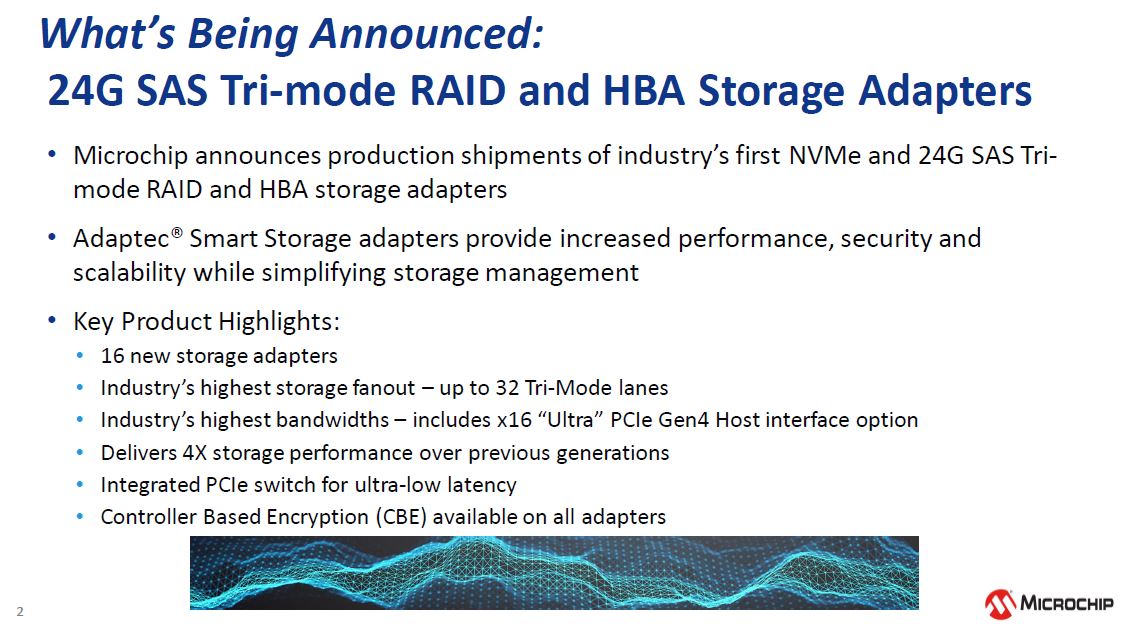
With this generation, we get PCIe Gen4 as well as the 24G SAS4. The faster host interface is actually a key component of the new solution as it allows for the higher data rates.
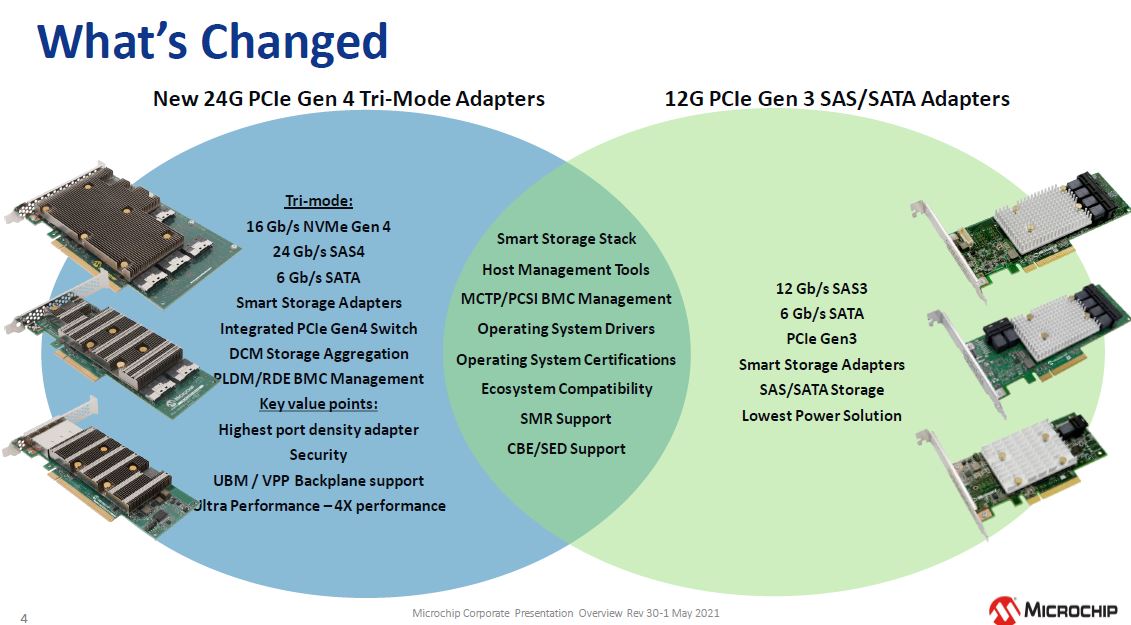
Interestingly, Adaptec branding is still being used. While a few years ago it was common to see PCIe x8 RAID adapters and HBAs. These days SSD performance has made x16 controllers more common, even with doubling the PCIe Gen4 bus.
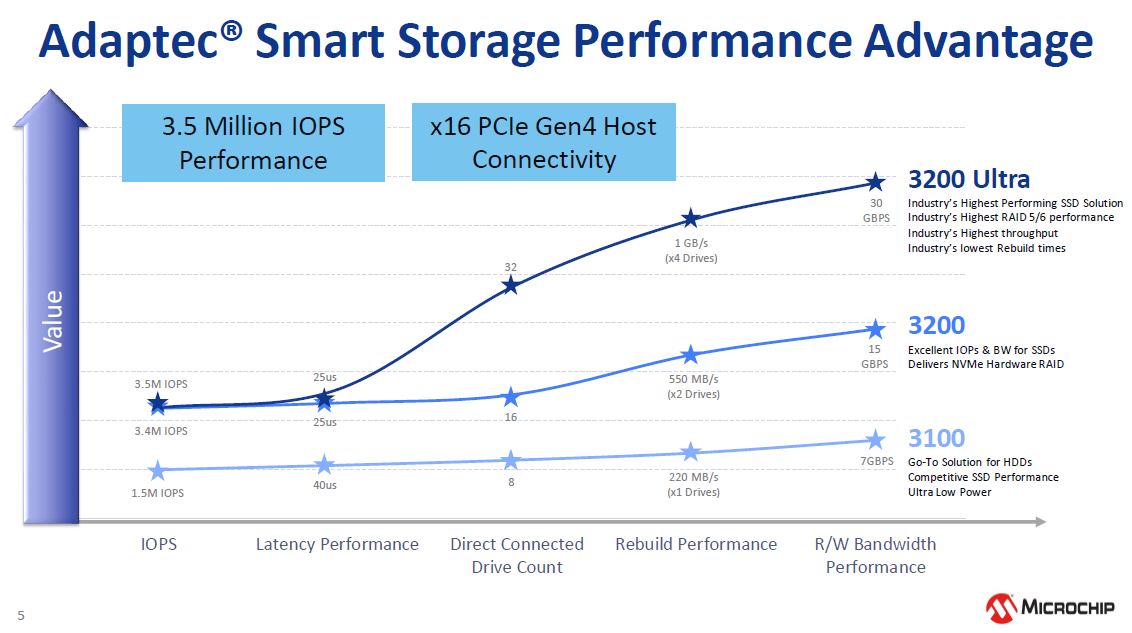
We are not going to re-hash the next few slides. They are fairly easy to read. Another big feature of the Microchip Adaptec solution is security so we have new encryption and secure boot features.
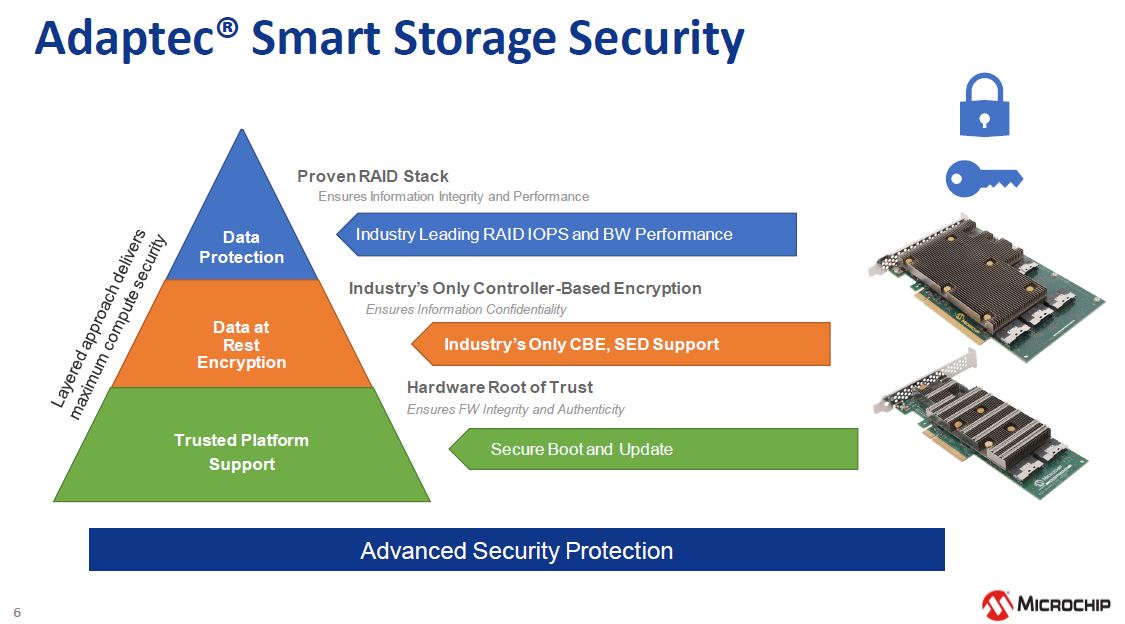
The solution also has features such as Redfish integration which allows scripting in a common management language for managing fleets of servers and storage on each.
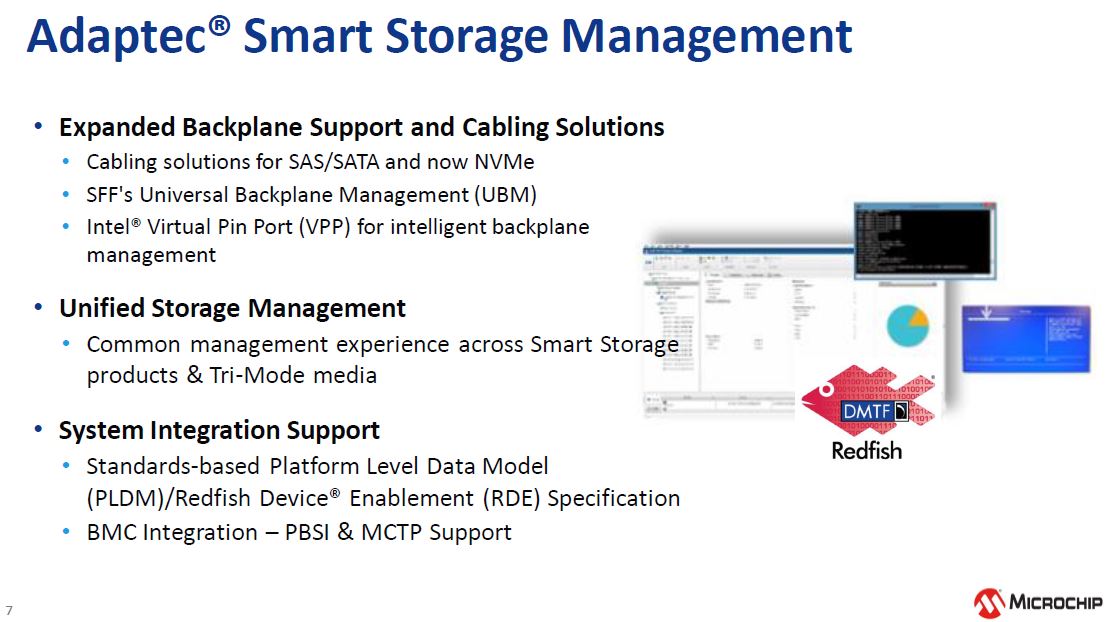
The actual lineup has three series. The top-end is the SmartRAID 3200 solution with PCIe Gen4 x16 along with RAID support and NVMe, 24G SAS, and 6G SATA III support. One can quickly see how SATA has fallen behind in terms of performance here.
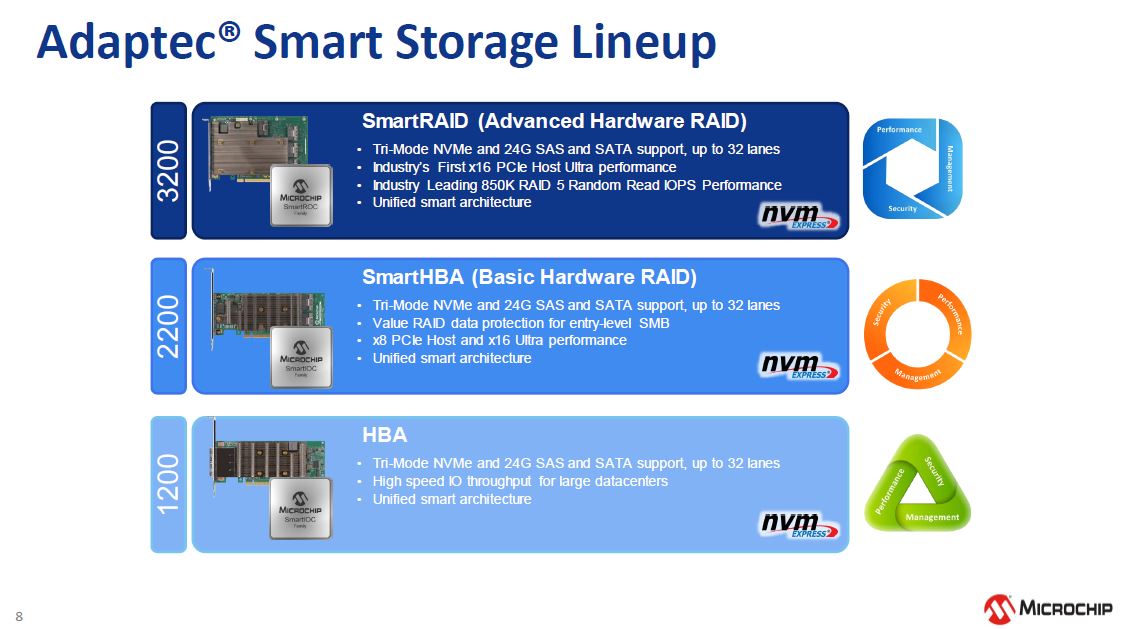
The SmartHBA 2200 series is the competitor to the lower-performance RAID arrays from other vendors (e.g. Broadcom) that have RAID. The HBA 1200 series is the basic HBA allowing for basic drive connectivity.
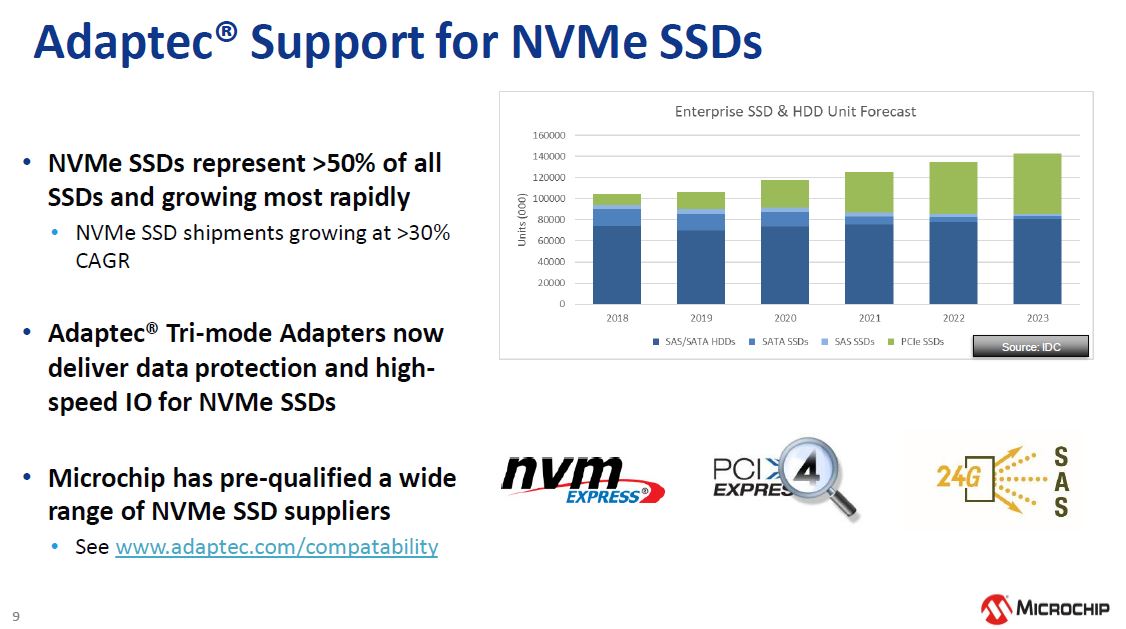
NVMe SSDs are typically installed attached directly to PCIe lanes from CPUs. Adding a HBA or RAID controller adds a bump in the wire. It also adds a layer of management that is not found on typical CPU PCIe lane solutions so there is a trade-off. The real benefit is being able to use lanes for NVMe but also for storage. Think of servers with perhaps two NVMe bays two SATA SSDs for mirrored boot, and a SAS4 disk shelf as an interesting use case where this tri-mode feature could be used.
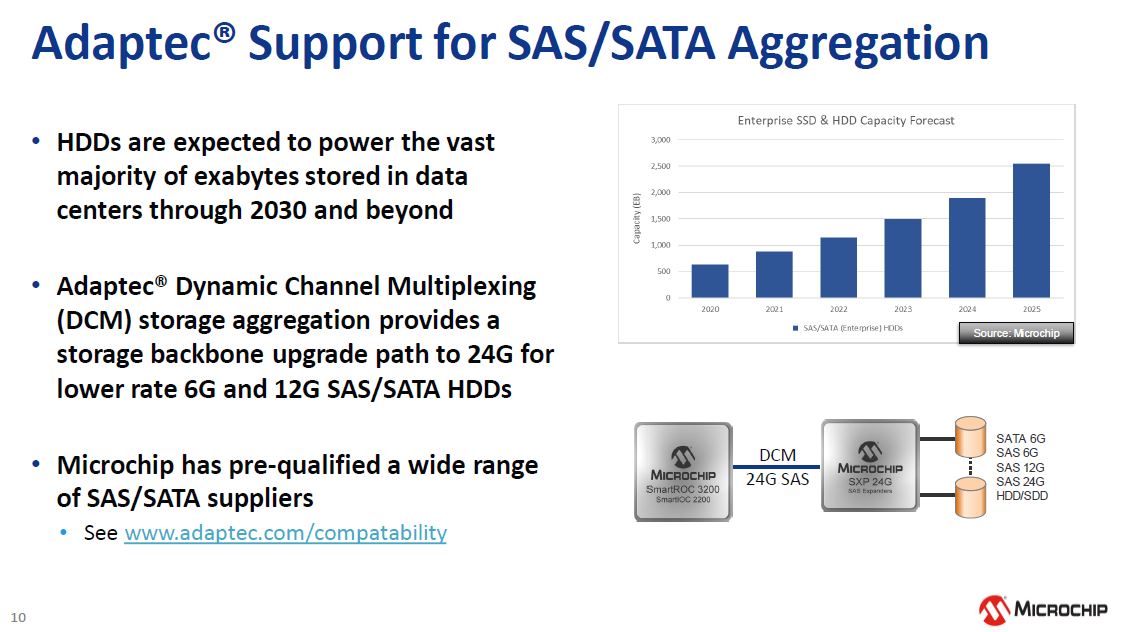
While those running modern compute servers with NVMe storage may not see the value in the adapters immediately, those using traditional storage will see the extra flexibility as a bonus.
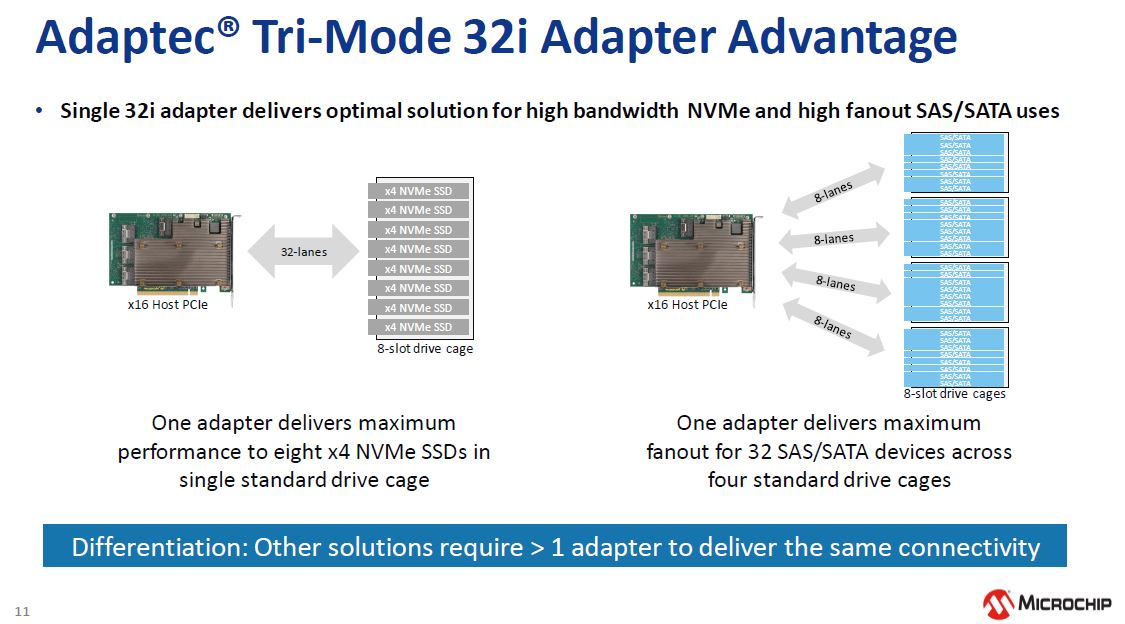
Microchip says that is shipping production parts as part of the announcement. Here is the decoder key to Microchip Adaptec HBAs and RAID controllers:
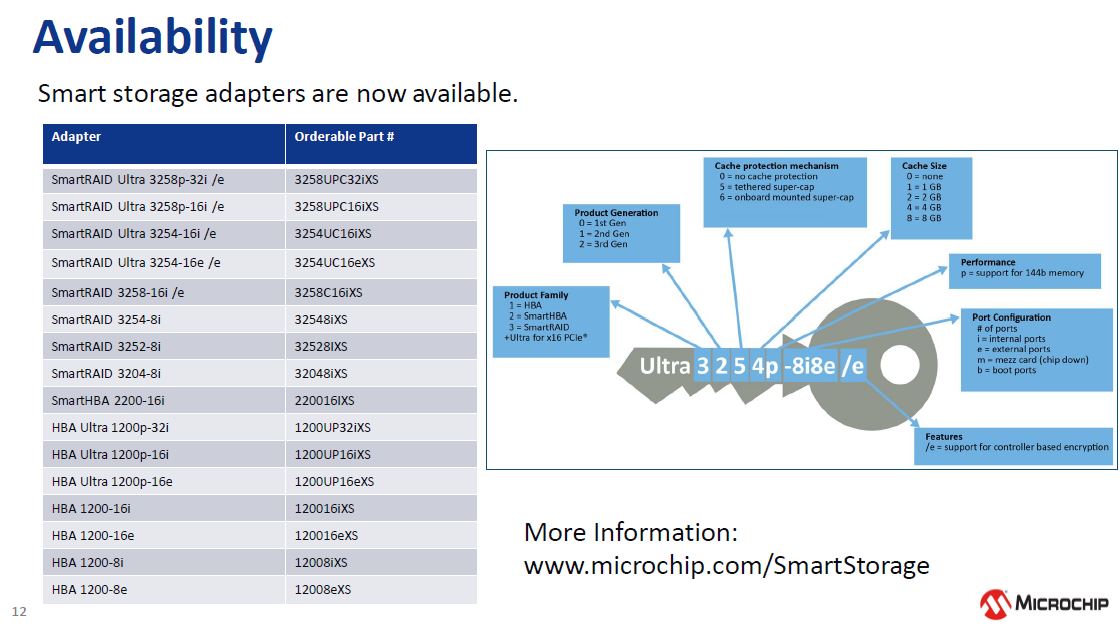
We were not going to publish this slide, but here are the cables one will use in this generation. One will notice some newer connectors than what we have seen in older generations.
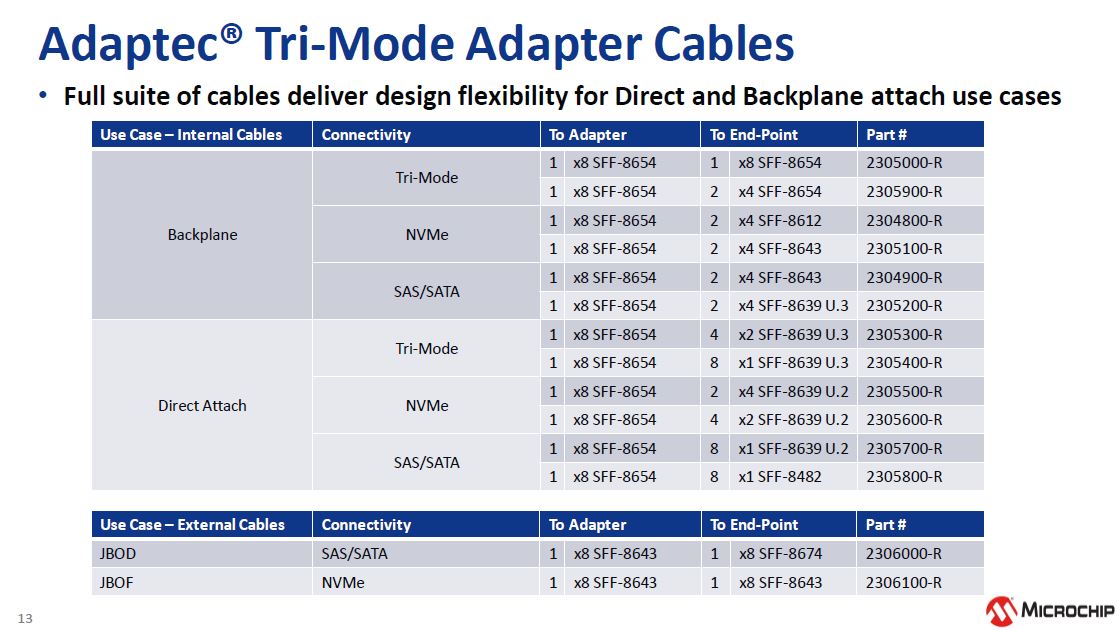
This may also be handy to save/ bookmark as a reference in the future for STH readers.
Final Words
If you come from the all NVMe world and software-defined scale-out flash as an example, then tri-mode adapters are unlikely to be what you need. If on the other hand, you need to attach some disks or simply need to build a solution with a 24G SAS dual-port array for active-active high availability, then a tri-mode adapter may seem like a welcome part. For those who want to take advantage of PCIe Gen4 and 24G SAS4, new controllers are an important step for the ecosystem.




Will the MaxCache, the SSD Caching, work with NVMe drives? That is one of the most useful features of 3100 series raid cards
hi guys,
can any of you obtain clarity from Kioxia the T10 DIF Data Integrity Field support in their SAS product lines has been dropped?
https://downloads.dell.com/manuals/common/dfd-value_sas_future_rplcmt_for_sata_ssd.pdf
also says that dual port drives are no more, which we know not the case,
so there’s definitely confusion about T10 DIF implementation and DIF support I can’t believe actually dropped since a major check box feature high on the list of any customers I know.
the slow specs don’t matter if your data is known to be written safely
mea,
T10 DIX, which is the same as DIF but stored separately from the data track / write, is what I’ve been looking for, and you’ll find plenty of significant support for, rather than DIF, but I can’t get used to the nomenclature change since support for the original DIF implementation was so important to procure once upon a time